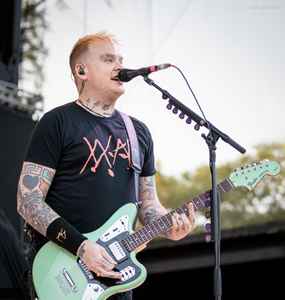

By the After The War tour he was exhausted creatively, disconnected from what had got him into music in the first place. But as Moore’s guitar rack filled with a heavy metal arsenal of Hamers, Charvels and Ibanezes, he grew tired of the overblown trappings of '80s rock. The solos got faster (check out the E-minor picking/legato workout Speak For Yourself, on 1989’s After The War), and Moore had more hit singles with power ballads ( Empty Rooms) and rock anthems ( Out In The Fields, with Lynott). On the albums Corridors Of Power (1982) and Victims Of The Future (1983), the riffs got heavier, the guitars got pushed through more effects, and his trusty Tube Screamer got cranked way up. All the better to play the hard rock/heavy metal that won him a large loyal following (Kris Barras’s dad among them) in the 80s. 010-.052s, usually Dean Markleys, and always used extra-heavy picks. The UK Top 10 ballad Parisienne Walkways was sung by Lizzy’s Phil Lynott, rested on a gentle 6/8 rhythm, with Moore’s beautifully expressed Les Paul-voiced lead hook wrung from the A Harmonic Minor scale, over the song’s jazz standard-style chord changes - Am/Dm7/G11/Cmaj7/Fmaj7/Bdim/E. But, tellingly, Gary would share a room with Lizzy drummer Brian Downey on tour, and they would indulge their mutual love for the blues, playing cassettes featuring Mayall, Albert and BB King, and of course Peter Green.Īs a solo artist, Moore’s early albums showed the sheer conviction of his playing, and in 1978 the album Back On The Streets gave him his signature hit. The classic Lizzy song Waiting For An Alibi from the 1979 album Black Rose was an example of his formidable shred-rock style as he shared dazzling harmony lines with co-guitarist Scott Gorham. More famously, his sporadic, turbulent membership of Thin Lizzy proved his rock chops to millions worldwide. Between 19 he played jazz-rock in the group Colosseum II.

It’s also on the new collection, How Blue Can You Get – its unique tone is clear and present on the self-penned closing track, Living With The Blues.Īfter Skid Row, Moore’s career passed through various phases, and slowly but surely his incredible proficiency on the electric guitar saw him drift away from his roots in the British Blues Explosion. Moore called it ‘a battle axe to play’, but would use it throughout his career, notably on Blues For Greeny, his 1995 album dedicated to his hero.
#Blues album ds 2434 genre mac
It’s the instrument heard on Fleetwood Mac hits such as Need Your Love So Bad and Man Of The World, its uncharacteristically single-coil sound down to the pickups being wired out of phase. That 1959 Les Paul, affectionately nicknamed ‘Greeny’, is now owned by another Moore super-fan, Metallica’s Kirk Hammett. Peter discovered me in Skid Row in Dublin when I was 16, and he persuaded his manager to bring us to England.” “I’d seen him play at Club Rado, he was using this amazing Les Paul that I went on to own, he plugged into a rented Selmer amplifier and the whole place was vibrating with his sound. “Peter was such a huge influence on me,” Gary said. He met gifted yet troubled guitarist Green two years later in Dublin, when Moore’s new band Skid Row supported Green’s Fleetwood Mac. Then I heard Jeff Beck and Peter Green, and that’s where it all came from for me.” He kind of invented rock guitar as we know it – playing the blues with that edgy, aggressive tone. “I’d been playing for five years when that came out,” he told this writer in 2004, “and I heard Eric using that Les Paul/Marshall combination. He would regularly share a stage – and guitars and amps – with another upcoming player, Rory Gallagher. In 1966, Gary was just 14, already a self-professed ‘blues snob’, and playing guitar in local bands in his hometown, Belfast. (Image credit: David Warner Ellis/Redferns)


 0 kommentar(er)
0 kommentar(er)
